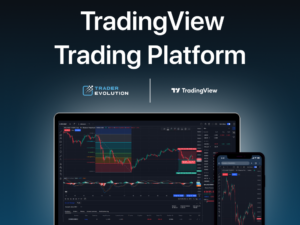FX liquidity providers with STP regulatory licenses are still profit sharing. It’s a recipe for disaster
Some of the OTC B2B firms continue to do revenue sharing, despite the trail of destruction it has left in the past. We investigate this today, and gain perspective from within on how to build your broker and lead the entire industry toward proper long term business relationships with genuine multi asset providers and to lead the way away from the revenue share race to the bottom

STP. An acronym that is used in as much of a jargonistic manner as ECN.
Both three letter acronyms have been bandied about for as long as anyone can remember, in many cases used by inexperienced junior sales staff when conducting telephone conversations with inexperienced traders in an attempt to attach credibility to what is effectively a tiny, white labeled marketing-led brand of a completely closed MetaTrader platform which is used as a vehicle to gain deposits.
Very few uses of these two acronyms relate to their genuine meaning.
STP relates to the term ‘straight through processing’, which is order execution terminology for the method by which any electronic trading is an automated process which is conducted purely through electronic transfers with no manual intervention involved. Its popular uses are in payment processing as well as the processing of securities trades, however it is often misused in the retail FX industry.
To understand this methodology properly, an important matter to consider is that executing trades on an STP basis applies to any component of the execution chain, whether it is the Tier 1 bank, non-bank market maker, prime of prime liquidity provider which takes its aggregated liquidity feeds from the bank and provides them to retail brokers, or dealers in commodities and other settlements such as futures on listed derivatives venues.
Thus, it is possible to use STP methodology from within a retail brokerage to automatically process trades to a prime of prime broker, and for a prime of prime broker to use STP methodology to process to the Tier 1 bank or non-bank market maker and for derivatives venues to execute directly via a central counterparty on an automated basis with no dealing desk intervention.
Making a market, which is often known as trade warehousing, or operating a ‘b-book’, is not illegal, and indeed Tier 1 banks and non-bank market makers are mainly engaged in making their own markets, largely due to their position being at the top of the chain.
What is poor practice is little understood by any regulatory authorities, and herein lies the loophole that has allowed a long and destructive chain of events to take place as a result of a handful of firms in the B2B sector of the FX industry which market their services to FX brokerages being able to prosper due to a case of marketing over substance.
Nobody should assume that any company with the word ‘prime’ in its title is by default offering prime Tier 1 liquidity.
At a conference a few years ago, FinanceFeeds asked a Chinese company where they were getting their liquidity from. The sales person then proceeded to list a series of Tier 1 FX interbank dealers, but of course it was clear that the company was a retail b-book MetaTrader broker, which sought to onboard other brokers and bucket the trades, which is a common practice in the region.
Unfortunately, it is the case that even today firms in regulated regions such as the United States and the United Kingdom still manage to get away with operating a company which markets itself as a prime of prime, yet engages in profit sharing, which is against the terms of an A-book license.
AFX Group, Fortress Prime and Boston Technologies are examples of companies which purported to offer a prime brokerage service, yet were profit sharing and b-booking. When the house of cards inevitably collapsed, brokers were left high and dry and could not pay their client withdrawals.
AFX Group brought down Gallant Capital, with which it had a profit sharing agreement. FinanceFeeds investigated this at the time and gathered a vast amount of information over the past few years concerning the business activities of AFX Group, including its profit sharing antics which were a massive contributing factor to the demise of Gallant Capital Markets, and a cause of many brokers who genuinely thought they had a prime of prime agreement with AFX Group being unable to withdraw their client funds.
Upon investigating the firm’s business four years ago, we were met with a barrage of calls from unrelated parties all over Cyprus, attempting to silence the publication of the facts, however our research was absolutely right, as confirmed by a law suit in New York one year later by Esther Du Val, Chapter 11 Trustee for the estate of Gallant Capital Markets and Avenica.
AFX Group disappeared, and not much has been of consequence. The company’s external marketing man with an ego the size of a football stadium sent me a few angry messages threatening to ‘destroy my business’ if I carried on down the route of investigation, along with some colorful language. Charming.
Here we are in 2021, and unfortunately profit sharing is alive and well.
FinanceFeeds has been made aware of a FCA registered firm offering exactly that. In its marketing it says that retail brokers requirements are provided for in a one-stop shop including liquidity for FX, commodities, technology and revenue share.
Revenue share is not allowed with a license that requires $125,000 of regulatory capital and stipulates that the broker must operate on an A-book agency execution basis, in other words, STP.
The STP model is definitely being debated, and many genuine prime of prime brokers consider it to be ‘broken’ and not fit for purpose in today’s market.
One particular prime of prime brokerage that FinanceFeeds spoke to today said “If you are a British firm and you are operating under a 125,000 license, you are not allowed to do revenue shares, nor are you allowed to have “skin in the game”.”
To have “skin in the game” is to have incurred risk, monetary or otherwise, by being involved in achieving a goal. The main issues surrounding “skin” or excess “skin” is the principal–agent problem whereby transparency and fiduciary obligations are disregarded by principals who have capital or excess capital (skin) tied into an entity.
Many banks and other financial institutions bar employees from having any “skin” where client capital is managed, principally to address the issue of front running and commingled funds such as the cause of the demise of MF Global many years ago.
Investment structures such as hedge funds, private equity, Trusts and mutual funds are legally limited to a minority investment positions or are done to create a tax efficient structure. Typically equity inputs by these fiduciaries are around 0.5–2%. Nassim Nicholas Taleb and Constantine Sandis have argued for skin in the game as a rational and ethical heuristic for all risk-taking, and STP brokers are not allowed any form of ‘skin’ under their license, therefore those operating their own dealing desks and offering that to a broker are in breach.
An important voice to take notice of in this regard is that of a firm which develops sophisticated multi-asset platforms with which brokers can approach a multi-product range of tradeable instruments on listed exchanges as well as via OTC execution.
By operating on this basis, your broker can to a large extent free itself from the race-to-the-bottom profit sharing mentality which has dogged the retail FX and OTC derivatives sector for so long and has been deeply rooted from the affiliate marketing background from which most of the smaller brokers relying on off the shelf affiliate style platforms came.
Roman Nalivayko, CEO of TraderEvolution Global which builds platforms for multi-product trading via listed exchanges and deploys its technology on a per-broker basis today explained to FinanceFeeds “When we talk about the multi-market brokerage set up, one of the core components of it is trade connections it may start from a simple structure when platform connected via FIX API to well-known brokerages like Saxo Markets or Interactive Brokers, but in some cases, local players that are focused on the particular market can provide a better offer in terms of execution cost, so it is very important that platform is capable and plays well with the complex combinations of the trade connections.”
“Another case for such a combination can be when a brokerage company has an exchange membership on its domestic market and requires a direct connection with that particular exchange for execution and market data, along with the international markets connected via some prime broker, and would like to offer all these markets within one single interface and market connectivity module is one of those that create an edge for the multi-market brokerage projects.” said Mr Nalivayko.
This is a very good solution and by connecting via this means, would in the end cause OTC liquidity providers which continue to internalize trades or offer revenue share deals which are counter to the licensing and to the sustainability of the electronic trading industry to fall in line and operate alongside derivatives venues, as the client bases would expect it.
Similarly, onboarding better clients with greater understanding of the market and with larger portfolios is something which would naturally occur.
The only reason many retail clients want high OTC leverage and revenue share is because the OTC market has educated them that way. There could be an argument that these are people who should not be trading, as that method is not financial services, it is gambling against a very biased house.
Going down the multi product route would go a great deal of distance toward eradicating the revenue share model entirely, which in turn would remove the endless regulatory targeting of the OTC derivatives sector, and get brokers into a higher echelon of clients for a more long term business relationship.
The churning has to stop.








